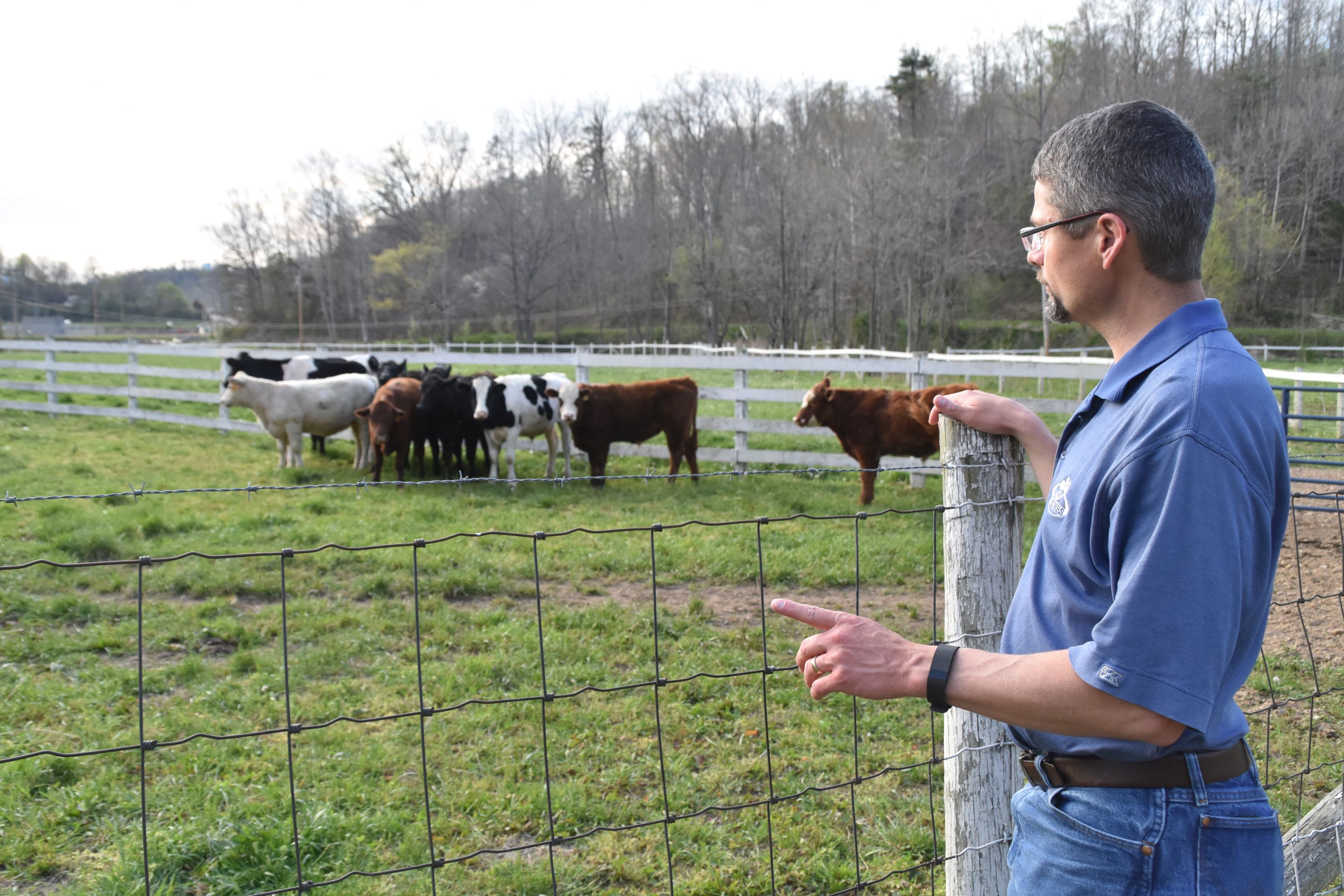Pasture to Plate by Ray Bowman
Posted on Jul 18, 2016Increased interest in locally sourced foods has provided a growing market for small farms selling produce directly through farmers’ markets and Community Supported Agriculture (CSA) across the Commonwealth, and livestock producers are finding their niche as well.
More and more growers are holding on to their calves and feeding them to be finished, harvested and sold to Kentucky consumers. Pasture to Plate is a project to help such efforts be more successful. It’s a collaborative effort of the University of Kentucky College of Agriculture, Food and Environment, Kentucky Beef Network, Kentucky Beef Council, Kentucky Department of Agriculture and the U.S. Department of Agriculture, Forage-Animal Production Research Unit with financial support from the Kentucky Agricultural Development Fund..jpg)
“This program is, hopefully, going to target producers that are thinking about direct marketing or working with some of the local processors,” according to Dr. Jeff Lehmkuhler, UK Extension Beef Cattle Specialist. Lehmkuhler says three new USDA processors have opened in just the last 5 years. “We see a demand for local beef with folks wanting to see additional sources of supply for that product.”
In addition to beef producers, the program is open to youth projects, meat processors, chefs and consumers. Essentially, anyone with an interest in beef can benefit from the training.
Kentucky has traditionally been a cow-calf state, without as much emphasis on what it takes to finish cattle for direct sales. Lehmkuhler says he hopes Pasture to Plate will help cattlemen produce a more market-ready product.
.jpg) The program utilizes a hybrid learning approach that blends classroom work with practical, hands-on application. Nutrition, health, genetic and financial considerations are addressed in the classroom, then attendees adjourn to the barn lot to evaluate calves and participate in interactive discussions.
The program utilizes a hybrid learning approach that blends classroom work with practical, hands-on application. Nutrition, health, genetic and financial considerations are addressed in the classroom, then attendees adjourn to the barn lot to evaluate calves and participate in interactive discussions.
“We have three locations across the state,” notes Lehmkuhler. Participants can choose the location most convenient to them, whether it be the UK Princeton Research and Education Farm, Eden Shale Farm in Owenton or the Morgan County Extension Research Farm in West Liberty. “The nutrition program is slightly different at each location to demonstrate flexibility, to show that, within these three systems you can finish cattle in relatively the same amount of time.”
Lehmkuhler says that, with Kentucky’s generous forage growing season, producers can choose if they prefer to finish on pasture, feed grain on grass or direct finish in a more conventional grain feeding finishing system.
This is the second year for this version of Pasture to Plate. “It had been done before, 10 or 15 years ago,” said Lehmkuhler. “This program is basically the same as before with the exception that it is now done in more areas and trying to add the twist of three different management systems.” Otherwise, Lehmkuhler says, the goals are basically the same now as they were a decade or so ago. “We want farmers to visualize the difference between feeder cattle types. That’s why we have Holsteins as well as large and small frame feeder calves.”
Pasture to Plate spreads over five sessions, from spring to early fall, with sessions being replicated at each of the locations. The culmination of the project features the finished product, with participants getting to sample steaks from animals managed on the different systems. “We want the producers to understand that we can produce quality beef in this state,” Lehmkuhler explained. “By giving them the opportunity to actually taste it, they can walk away saying ‘I can do this.’”
Comments